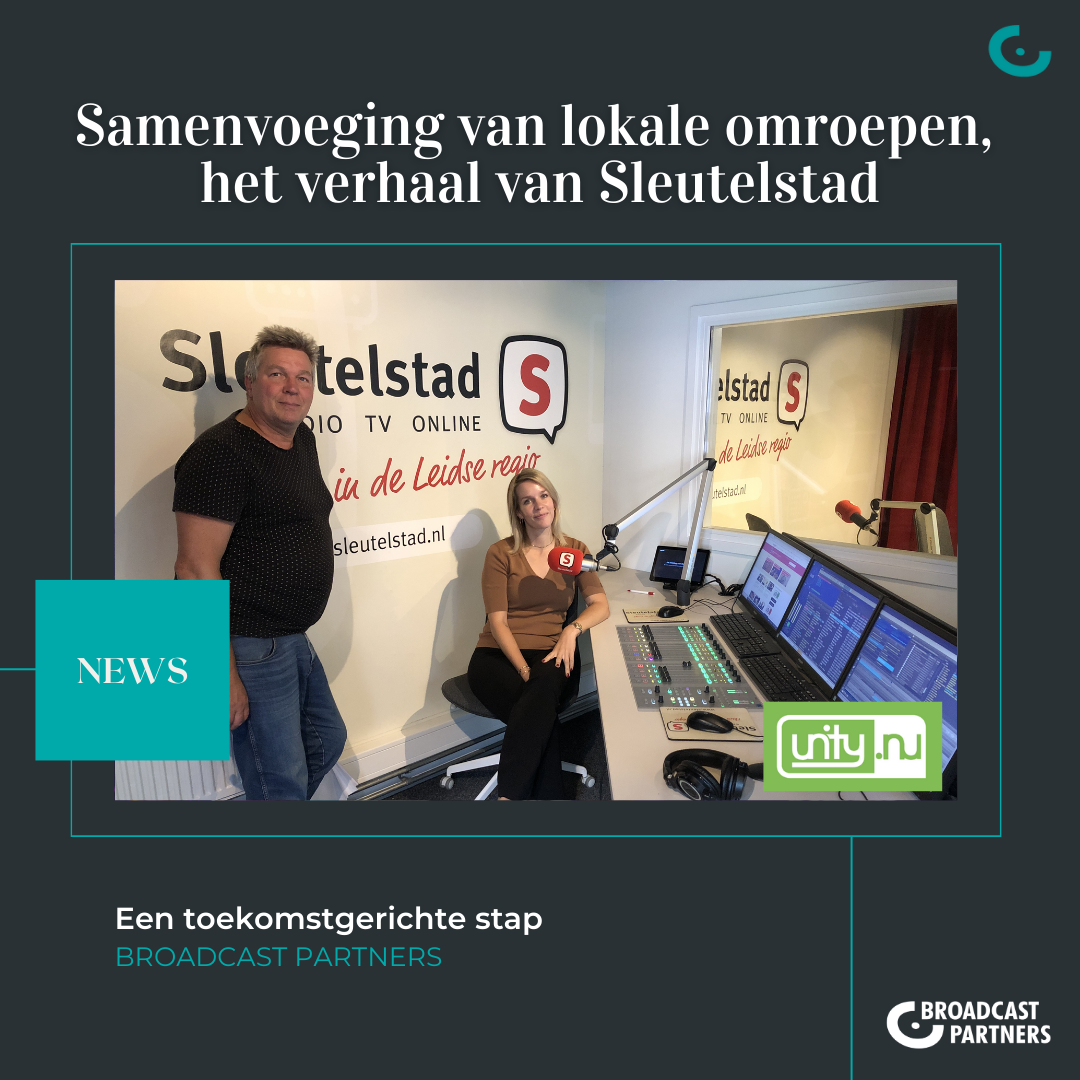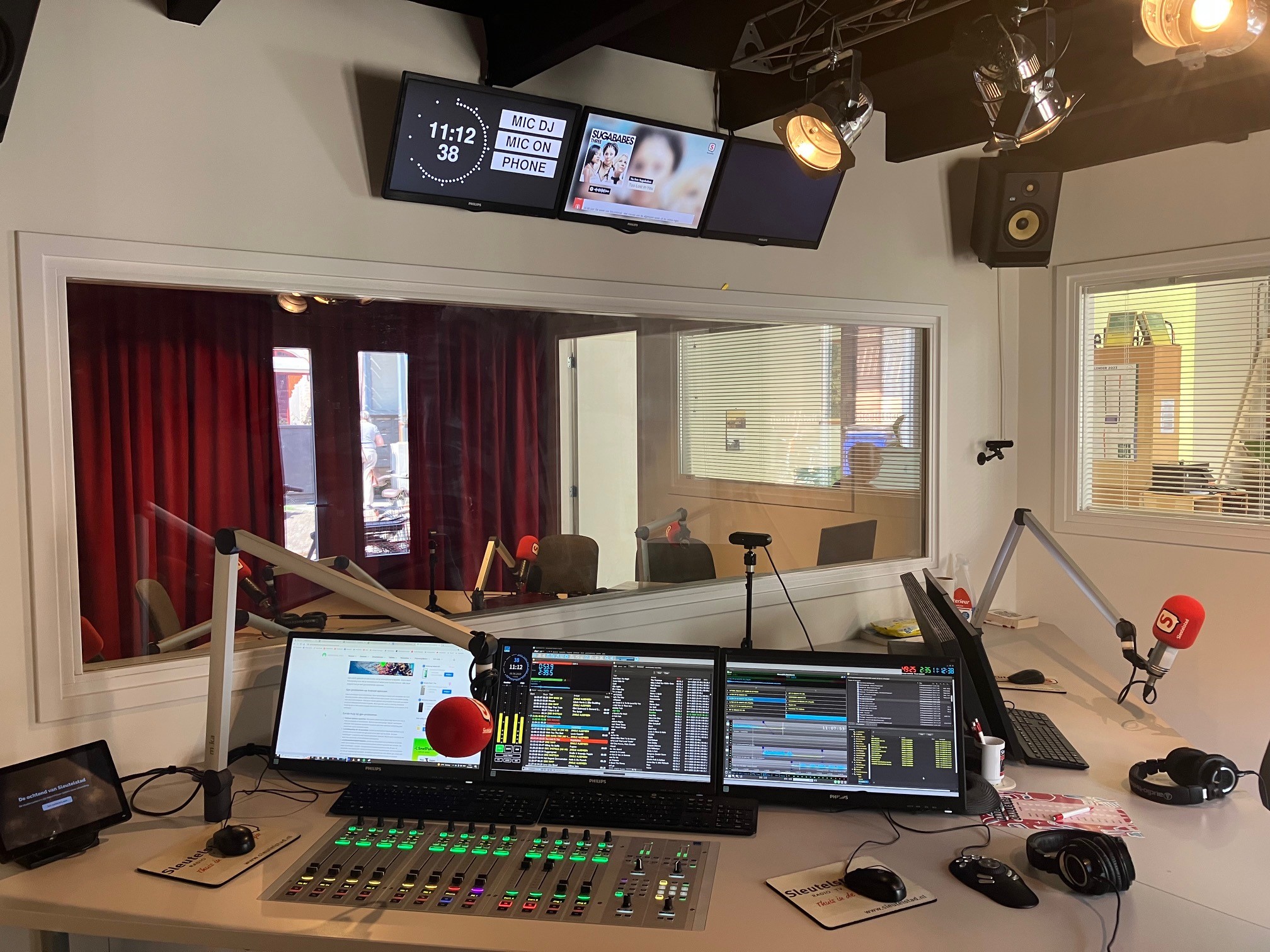Transforming local broadcasters into regional broadcasters: an in-depth look at the challenges and preparations, with Sleutelstad as an example.
The media landscape is undergoing constant evolution, and local broadcasters are no exception. Increasingly, these local sources of information and entertainment are merging into area broadcasters to serve a wider audience and make more efficient use of resources. In this article, we look at how Sleutelstad, a local broadcaster, took the leap into the future by uniting with other broadcasters in their region.

One Name, Two Forces: The Merging of Key City and Unity
While the merger of Sleutelstad and Unity went smoothly, one issue still lingered: the name. The organizations decided to use two names, depending on the context. Sleutelstad remains the name for news, while Unity is the name for radio music programs. Work arrangements were also made quickly and this ensured a smooth transition. Recently they already merged the website which can be found at: Sleutelstad In the coming period, they will also hold talks with Midvliet to merge with Sleutelstad and Unity.
From Money to Journalism: Budgets and Future Plans
The financial aspects of a merger are critical. Sleutelstad emphasizes investing its budget in journalistic activities. This includes paid journalism while volunteers are given the space for radio presentation. So the future will be built on a strong journalistic foundation.
“Currently, we have decided to maintain both the brand names and logos of both broadcasters. After a year, we will evaluate this approach to assess whether it is working well and whether it might be appropriate to introduce an umbrella new name. In addition, for the time being we will retain two locations that will eventually be connected, allowing broadcasts from both studios. Again, we agreed to assess this arrangement over time and if necessary adjust it by moving into one joint location. These aspects actually constituted the main, if not only, points on which we had not yet reached full agreement. But we are going through this calmly, because these things are achievable and we will work on them step by step.”
Tips for Fellow Broadcasters: Timely Beginnings and Collaboration
The transition from local broadcaster to regional broadcaster is not an easy task. Sleutelstad’s advice to other broadcasters is to start early. It includes not only technical and infrastructural aspects, but also building cooperation and understanding among the parties involved.
“For us, it’s probably a little easier because we don’t have to merge with 5 or 7 broadcasters. But we realize that there will still be challenging issues coming our way. For example, when we merge the two programs in December. At that time, the broadcast frequencies of one of the current broadcasters will expire, because we have not applied for this.”
Future Plans: Meeting New Challenges
Sleutelstad’s future plans include jointly devising innovative journalistic approaches. It is clear that broadcasting is not afraid of the unknown and is willing to adapt to changing needs and technological developments.
Merging Programs: A Technical Puzzle
Merging radio programming is a complex task. Technology integration, software solutions and consultation with suppliers play an important role in this. Key City stresses the importance of thorough surveying and working with technical experts.
Future Services: Broadcast Field and Technical Challenges
The broadcaster faces technical challenges, particularly in expanding its broadcast area and improving signal quality. This includes seeking support from outside parties such as Broadcast Partners.
A Prosperous Merger
Sleutelstad’s journey from local broadcaster to regional broadcaster has been smooth so far. Talks between Sleutelstad and Unity began in response to the formation of regional broadcasters. The desire to get ahead of a forced amalgamation led to constructive discussions between the boards and eventually the amalgamation of various aspects of the broadcasters.
In a dynamic media landscape, it is essential that local broadcasters adapt to changing circumstances. Sleutelstad’s successful transition illustrates how cooperation, planning and technical adjustments are crucial to a smooth transformation into a regional broadcaster, while maintaining a focus on high-quality journalism and entertainment for the local community.

In conversation with Chris de Waard, editor-in-chief of Sleutelstad
Photo: Chris and Marleen Hogendoorn in the studio of Sleutelstad, taken by Robbert Beurse
Website: Key City







